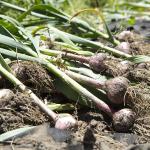Here are some examples of our work at UTS contributing towards SDG 12.
About Goal 12: Responsible consumption and production
The planetary crisis of climate, biodiversity loss and pollution are all under-pinned by unsustainable production and consumption. Our consumption of natural non-renewable resources far exceeds the planet’s carrying capacity, yet despite this global material consumption rose 70% in the 17 years between 2000 – 2017. If we are to achieve sustainability, we must change the way we use resources, recycle more, waste and pollute less, and switch to cleaner more planet friendly technologies.
At UTS we’ve developed a plan to phase out single-use plastic packaging, and in 2019 opened Australia’s first fully plastic free Food Court. Our cutting-edge researchers are working on new technologies such as making bio-plastics from algae rather than petroleum oil. We’re proud of our on-campus recycling, and the Institute for Sustainable Futures hosts e-Waste Watch, a think tank focused on incorporating circular economy principles into the e-waste sector. Below are some examples of our impact.
Circular economy food waste recycling at UTS
UTS is facilitating the circular economy by processing 50 tonnes of food waste on-campus per year into soil conditioner, sent to local farming communities to grow garlic, which returns as food to UTS and other Sydney outlets.
Ceramics made from recycled glass
A recyclable ceramic material made from glass powder promises to reduce the carbon footprint of bathrooms, kitchens and roof tiles.



